by Christine
Erratt
(click on photos to enlarge image)
SILVER SPOONS AND AUSTRALIAN FLORA
Australia's unique flora has been portrayed in the
decorative arts since the early colonial times of the last
decade of the 18th century. The use of Australian flora to
decorate silverware is of particular interest and diversity.
Early colonial works before the 1850s are few and far between a
combination of lack of wealth and paucity of available silver.
By the second half of the 19th century the colony had become
wealthier. The gold rush of the 1850s brought a massive influx
of immigrants, as did the promise of a better life for many from
Europe at that time. German and Danish immigrants to South
Australia included a number of trained silversmiths who found a
society ready to support their work, which became prolific. It
was ‘the golden age’ of Australian silver. Huge centrepieces
were commissioned as were elaborate trophies and a wide range of
ecclesiastical wares. Most of these items bore some form of
flora as decoration. Tree ferns and their gentle fronds abound
as do vine leaves; Sturt Desert Peas (Swainsona) decorate the
handles of a trophy made in this era in Adelaide, the capital
city of South Australia. Similar works were produced in other
major cities of the colony mainly by English and Scottish
immigrants, but not in the same profusion as they were produced
in South Australia. However, there seems to be little evidence
of flatware being adorned with Australian flora up to this time.
Federation of Australia was declared in 1901 and this brought
with it a new jingoism and pride in things Australian. The 20th
century also saw the evolvement of Arts and Crafts Societies.
Here was an opportunity for hobbyists to learn the art of
metalsmithing, including silversmithing. Many found spoons to be
appropriate items to be made and Australian native flora
suitable decorative motifs, specially for spoon handles and
finials.
The unique wildflowers of Western Australia (WA) presented a
delightful range for adornment of flatware not only for the
hobbyist but also for the two main silversmithing businesses
there. Linton Silver and Harris & Sons were the two particular
businesses in WA that saw openings for such souvenir Australiana
spoons. Linton Silver spoons of this type, designed by Jamie
Linton (1904-1980), continue to be made currently as do those
originally designed by Charles and Harold Harris commencing in
1952. The range includes Geraldton wax (Chamelaucium), spider
orchid (Caladenia), Grevillea, Leschenaultia, kangaroo paw (Anigozanthos,
wattle (Acacia) the national floral emblem of Australia, and gum
leaves and gumnuts (Eucalyptus). Many other WA silversmiths have
seen the beauty and uniqueness of their State's flora and have
incorporated them in their work.
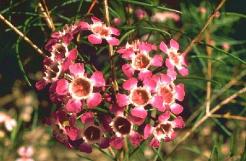 |
 |
Geraldton wax (Chamelaucium)
|
Spoon with Geraldton wax finial (Linton
Silver)
|
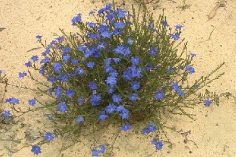 |
 |
Leschenaultia
|
Spoon with Leschenaultia finial (Linton
Silver)
|
 |
|
Leschenaultia in enamel on silver ladle
handle detail (Glenice Matthews)
|
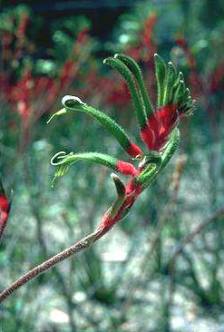 |
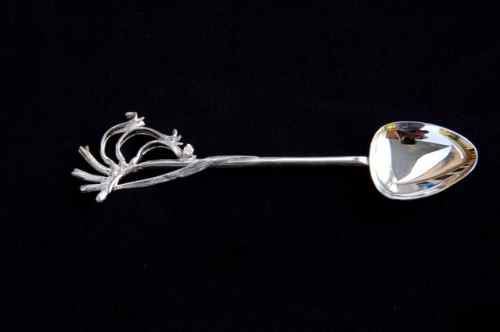 |
Kangaroo paw (Anigozanthos)
|
Spoon with Kangaroo paw finial (Harris &
Son)
|
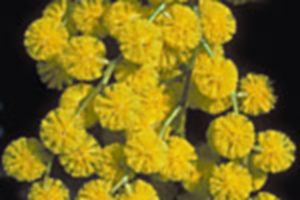 |
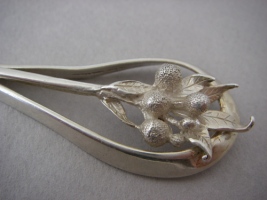 |
Wattle (Acacia)
|
Wattle finial detail
|
There are many varieties of gum trees in Australia and
gumnuts and gum leaves are prolifically used by silversmiths
throughout the country as decorative elements in their work.
Peter Gertler has a range of flatware so decorated including the
caddy spoon illustrated below. June Higgs also portrays them in
a set of teaspoons. The waratah (Telopea) appears in the work of
Libucha and Platt and Design Silver and the bottlebrush (Callistemon)
in Terry Walsh's flatware.
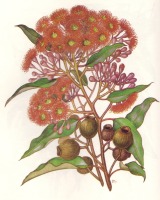 |
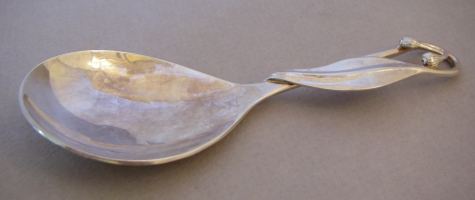 |
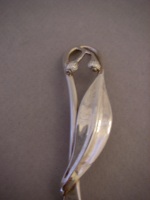 |
Gumnuts and gum
leaves (Eucalyptus)
|
Caddy spoon with gumnuts and gum leaf (Peter
Gertler)
|
Gumnuts and gum leaf detail
|
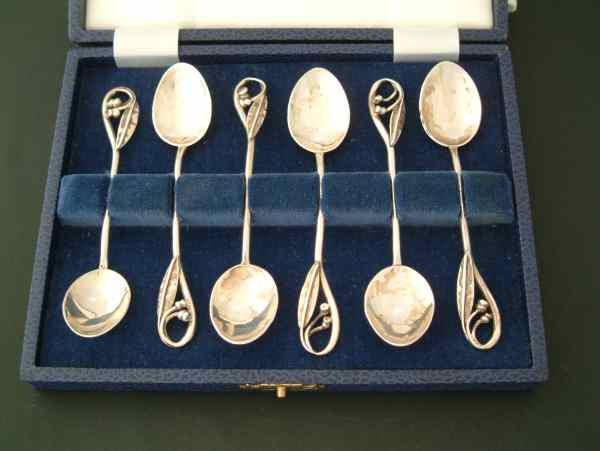 |
|
Set of six spoons with gumnuts and gum leaf
finials (June Higgs)
|
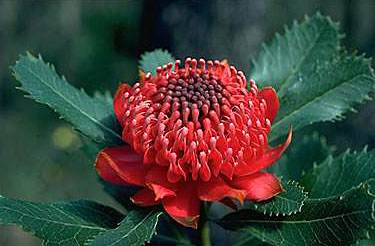 |
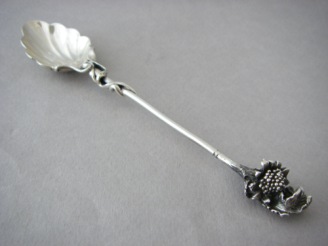 |
Waratah (Telopea)
|
Spoon with waratah finial (Libucha & Platt)
|
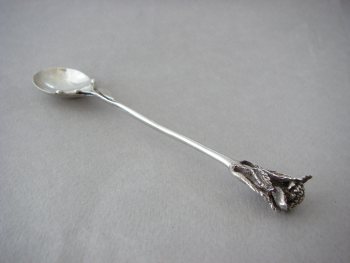 |
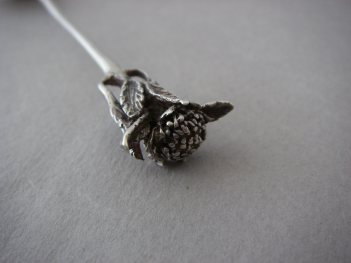 |
Spoon with waratah finial (Design Silver)
|
Waratah finial detail
|
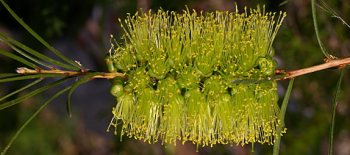 |
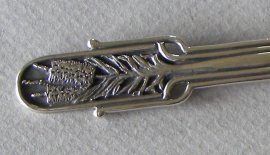 |
Bottlebrush (Callistemon)
|
Bottlebrush finial detail (Terry Walsh)
|
This brief summary of some of the many floral decorative works on silver spoons made in Australia presents an insight into a
much larger and collectable market.
|
Christine Erratt
- 2012 -
Christine Erratt is a researcher with a special
interest in Australian contemporary silver. She is the
author of Marks on Australian Silver and self-published
the books under the Australian business name of Parker
Press (ABN 15 192 003 086). The book can be purchased
online at www.parkerpressbooks.com.au. A book review is
available in ASCAS website at
http://www.ascasonline.org/articoloAGOST134.html
|
|
|



















